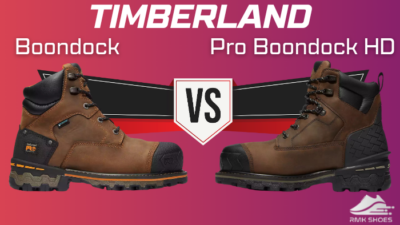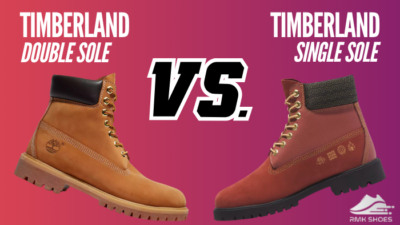Although most people wear boots for hiking, the number of people who rely on hiking sandals is not less.
And since Chaco sandals have a lot of good reviews for hiking, I also hiked around the tallest waterfall in North America wearing a pair of Chaco clouds.

In this article, I’m gonna disclose my experience of wearing Chacos with you. Hence, you’ll realize whether you should wear this footwear for trekking or not.
So, let’s move ahead!
Is It Ok to Hike in Chacos?
Yes! Chacos are one of the best trail-worthy footwear due to their incredible comfort, well-fit, durable, and arch-supportive soles. So, you can walk miles in Chacos. The sandals have outstanding traction which is suitable for trailing on any kind of rough or slippery terrain.
In general, individuals opt for protective boots or shoes while hiking. But there are also people like me who want to wiggle their toes and offer a bit of freedom to their feet without keeping them stuck in a closed area.
Therefore, Chaco sandals are a great deal for those hikers.
Let’s see the advantages of Chacos which make them good for hiking:
Comfortable Footbed
Whether it is walking, hiking, running, or training, a comfortable base beneath the foot is a must requirement. And Chacos nicely fulfill this necessity.
With a combination of LUVSEAT technology and ultra-soft polyurethane-built footbeds, Chacos are far ahead in terms of ensuring comfort. Even after long hikes with travel-friendly Z/Cloud 2 sandals, my feet didn’t feel any kind of fatigue or discomfort.
Moreover, its footbed conforms to users’ feet very well with time.
Secure fit
Chacos polyester webbing-made straps and belts offer a suitable fit to the wearer. Any user can get the right fit using those adjustable straps. The shoes have injection-molded ladder lock buckles for setting the straps in a proper way.
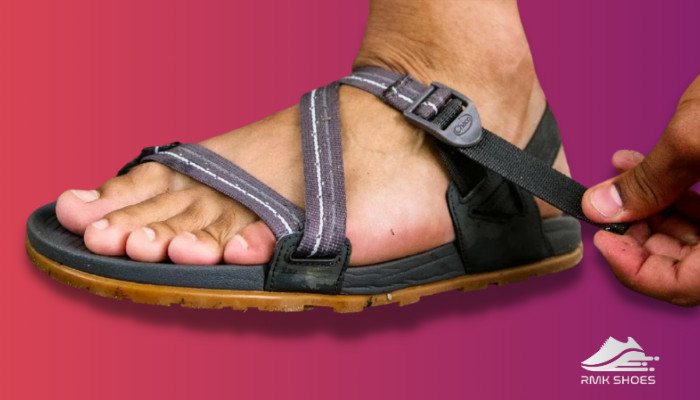
Regardless, the straps not only offer security but also provide ample protection to the upper and ankle areas. And this feature is quite important for assuring the safety of the hikers.
Excellent Traction
A rubber material known as ChacoGrip is inserted in the rugged outer sole of Chaco shoes. This upgraded compound provides sufficient grip on almost all types of surfaces and reduces the risk of sudden injuries while trekking.
Moreover, the rubber material is water-resistant. So, walking in these shoes in any muddy and damp environment is unlikely to be a problem.
Arch Support
Have you ever wondered why arch support is so important?
Well, it is one of the must-have features in any good category of footwear. Additional support at the bottom of your feet is necessary for proper foot alignment. It also prevents arch pain, plantar fasciitis, and Morton’s neuroma.
The insertion of LUVSEAT technology in Chacos makes them supportive enough. As a result, people with flat feet and those who demand extra arch support rely on Chaco footwear when camping or doing regular walks.
Durable & Lightweight
If you properly clean and care for your Chacos, a pair will last for several years even after regular long-time trekking.
I’ve been using the lightweight Chaco Z/cloud 2 for about three years. I often go hiking and attend university classes wearing this pair, still, it has never needed any repairs or exchange.
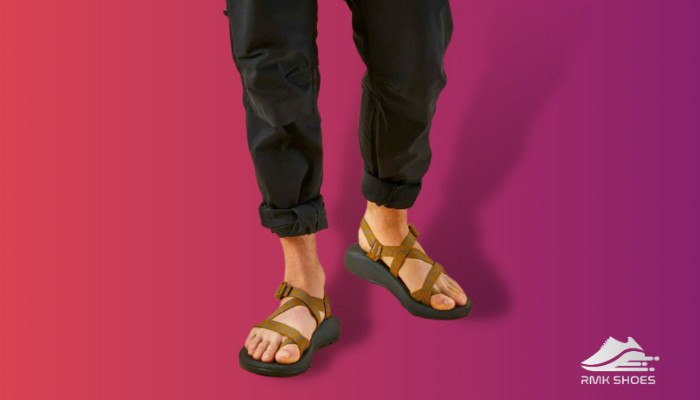
Generally, a pair of Chaco weighs around 1.5 pounds even after it contains dual-density PU material. The Bodhi model is only 208 gm in total.
Although this weight does not seem too much for hiking, there are many people who prefer lighter shoes than this. Tevas is a good option for them.
To know more comparisons between Chacos and Tevas, go through our separate piece on Tevas vs Chacos.
The above-mentioned features of Chacos make them good hiking wear. Furthermore, the shoes are quite affordable. You will get the finest quality pair for $100.
Do Podiatrists Recommend Chacos?
Yes, Chacos are comfy, arch-supportive, well-fitted, and slip-resistant footwear. Due to these features, Podiatrists encourage to wear Chaco shoes. On top of that, the American Podiatric Medical Association approved each version of Chaco footwear and allowed customers to wear them.
Generally, health specialists suggest wearing cushioned, supportive, and eco-friendly footwear. They also advise purchasing shoes that come in the proper size and fit. Chacos hold all of these features and also run true to size.
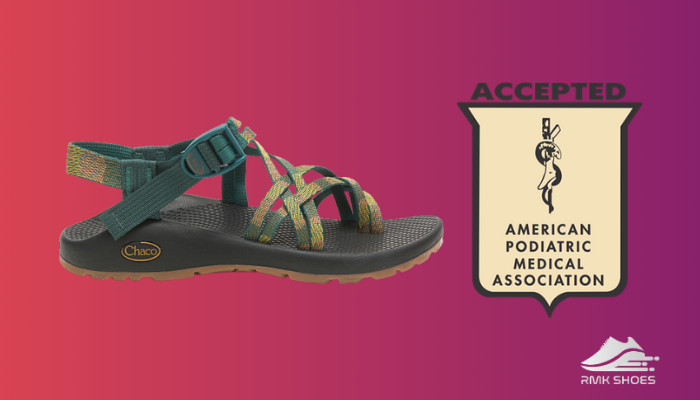
These sandals are comfortable, additional arch supportive, adjustable and come in various sizes and widths.
So, people with flat and wide feet do not need to struggle in finding proper shape Chaco shoes.
The sole and straps material of these sandals are so smooth that there’s no possibility of blisters. Additionally, the zero drop configuration or the same elevation from the forefoot to the heel helps the wearer to maintain accurate balance while walking.
Considering all of these factors, doctors recommend using Chacos.
Which Chacos Are Best for Hiking?
As you already know, Chaco is a good fit for trailing. But as more than 15 Chaco styles are available, you must wonder which is the best for hiking. So, now let’s see which Chacos are able to provide you with a great hiking experience.
Here are a few hiking-friendly Chaco footwear:
Chaco Z1 & Z2 Pro: Both of these models offer essential comfort, support, and snug fit to hikers. No matter how challenging the trekking surface is, the Vibram rubber outsole is able to survive boldly and hold the utmost grip.
What about the price? Well, these lightweight pairs sell for 100 US dollars.
Chaco Z Cloud: This lineage has several designs including cloud 2, cloud X, cloud X2, etc. One of the unique features of all these styles is an extra PU coating, which enables additional comfort. And this is one of the major differences between the Chaco cloud and the Classic version.
I already informed you about Cloud 2’s ChacoGrip soles. This ultra grippy out layer is suitable for traction even in the rocky and watery ground.
Chaco Z Volv: If you prefer vegan and eco-friendly footwear for treks, opt for any pair of the Z Volv series. These pieces have Ecotread patterned outsoles for better traction. The shoes are so fluffy and lightweight that they always float on top of the water. Like other Chacos its price is within reach i.e. under 100 dollars
Shoes to Avoid While Hiking?
An inappropriate pair of hiking shoes will definitely not give you a good experience. You will face several disturbances and negative consequences such as pain, blisters, and rubbing with those pairs. So you must know about the shoes that you should avoid while trekking.
Here is the list of inappropriate hiking shoes:
- New footwear should not be worn on a trek. Because the shoes are a bit uncomfortable before the break-in period is over. Wearing new shoes that haven’t finished the break-in period will increase your chances of getting blisters.
- Flip-flops aren’t a good choice for hiking. These shoes lack traction and easily come off the feet.
- Avoid wearing raised-heel and arch-unsupportive shoes like Stilettos, and pointy-toe shoes as they cause damage and bending to the ligaments.
- Never use ill-fitting shoes on a hike. A pair of loose-fitting shoes leads to frequent stumbling just as a pair of tight-fitting shoes leads to cutting off the toes. If your shoes are slightly loose, use socks with them. And follow the stretching methods in case of tight-fitting footwear.
- Instead of slippery shoes, use slip-resistant and good-grippy hiking shoes. Also, make sure that the shoes are waterproof. Boots from Timberland are mostly waterproof. Keep an eye on this brand while shopping for your next adventure.
- White and other light-shade shoes easily get damaged by mud. So don’t wear them during trekking across forests and uneven paths.
Are Chacos Good for Your Feet?
Chacos have comfortable, contoured, and medium-grade arch-supportive footbeds. Thus, they are good easy-wear sandals for normal and flat feet. But depending on the level of plantar fasciitis, Chaco footwear can be either good or bad for it.
There are two opinions about whether Chaco shoes are good for plantar fasciitis.
Some people find that Chacos’ customized sizes, additional comfort, roomy interior, and moderate support are good for individuals with plantar fasciitis.
On the other hand, some have complained about not getting enough arch support in these open-toed shoes. And their plantar fasciitis gets worsened by wearing Chacos.
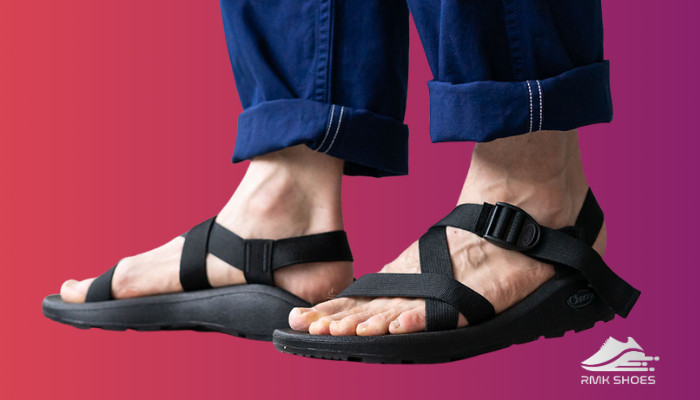
However, these shoes are familiar with their open-toe design, various shaped straps, belts, and grippy outsole.
Although the ultra cushion is somewhat missing in ordinary Chaco, their arch-supportive sole and other advantages have made them one of the desired wear among normal and flat feet people.
So, if you have no foot issues, wear Chacos without any hesitation. You can also wear them with flat and wide feet. But avoid Chacos in case of severe plantar fasciitis. Instead, try Birkenstocks as they’re proven to be good for plantar fasciitis.
Are Hiking Sandals Really a Thing?
Generally, hiking in shoes or boots was most common in earlier times. But over the past few years, a new trend has emerged among hikers to trek around in sandals.
Thus, brands started to make sandals, especially for hiking providing essential features like arch-aiding, grippy, cozy, and very lightweight to carry.
We all are more or less familiar with hiking shoes. They have sturdy upper, closed, and protective toe boxes, eyelets, and laces for tieing them properly. Moreover, those boots have grooved rubber outsole for extreme traction on all types of surfaces.
But there are many people who desire to hike in sandals and feel suffocated to wear boots for long periods of summertime hiking.
As a result, the manufacturers have brought some trekking sandals like Birkenstocks, Chaco, Bedrock, and Tevas into the market focusing on their consumers’ demands. These sandals are able to compete with other hiking shoes and have become the top-selling items. Among them, Birks are trendy for short hikes and regular walking.
So yes, hiking sandals are really a thing. They’re functional yet trendy among climbers!
Final Lines
In the summertime, Chaco sandals are a good option for hiking and any other outdoor activities.
But they won’t give you protection against debris, insects, and snow. If you are ready to compromise with these issues, just go on a hike with your favorite Chaco pairs.
Leave a comment if you have further queries and opinions regarding Chacos on hiking.

